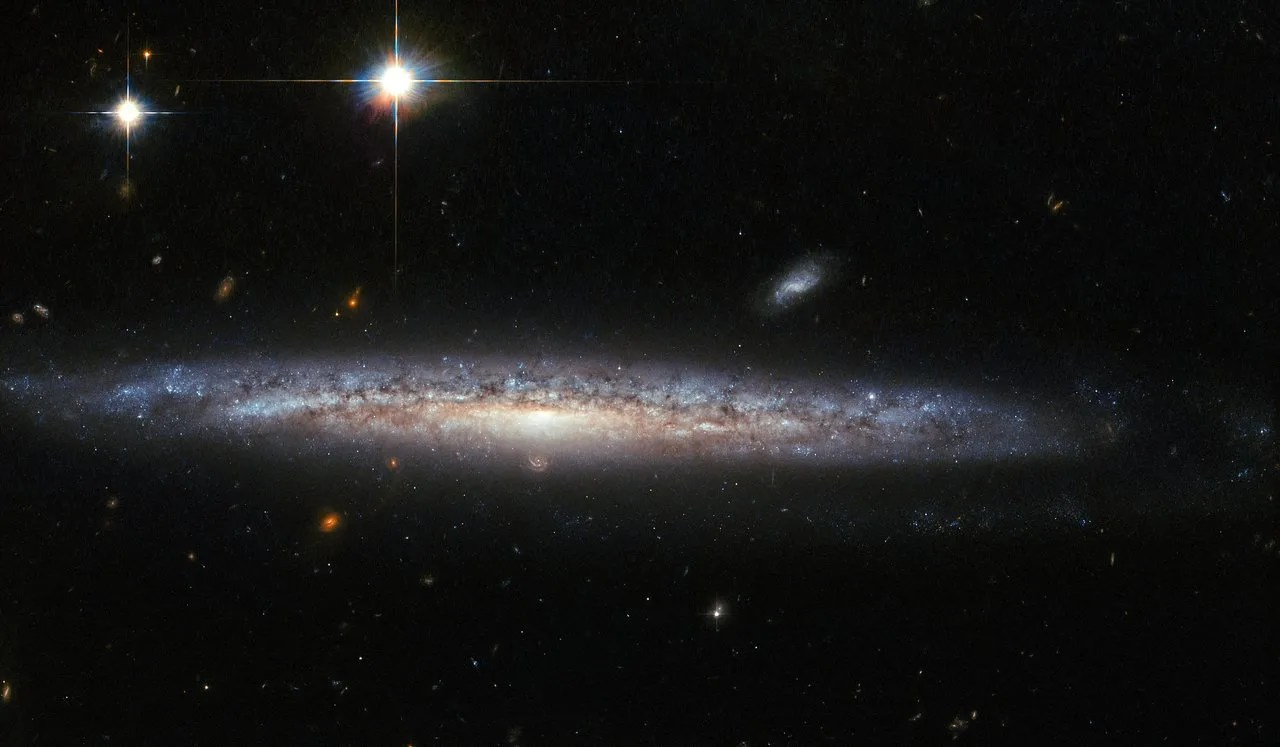This image, captured by the Advanced Camera for Surveys (ACS) on the NASA/ESA Hubble Space Telescope, shows the spiral galaxy NGC 5714, about 130 million light-years away in the constellation of Boötes (the Herdsman). NGC 5714 is classified as an Sc spiral galaxy, but its spiral arms — the dominating feature of spiral galaxies — are almost impossible to see, as NGC 5714 presents itself at an almost perfectly edge-on angle.
Discovered by William Herschel in 1787, NGC 5714 was host to a fascinating and rare event in 2003. A faint supernova appeared about 8,000 light-years below the central bulge of NGC 5714. Supernovae are the huge, violent explosions of dying stars, and the one that exploded in NGC 5714 — not visible in this much later image — was classified as a Type Ib/c supernova and named SN 2003dr. It was particularly interesting because its spectrum showed strong signatures of calcium.
Calcium-rich supernovae are rare and hence of great interest to astronomers. Astronomers still struggle to explain these particular explosions as their existence presents a challenge to both observation and theory. In particular, their appearance outside of galaxies, their lower luminosity compared to other supernovae, and their rapid evolution are still open questions for researchers.
Text: European Space Agency


































